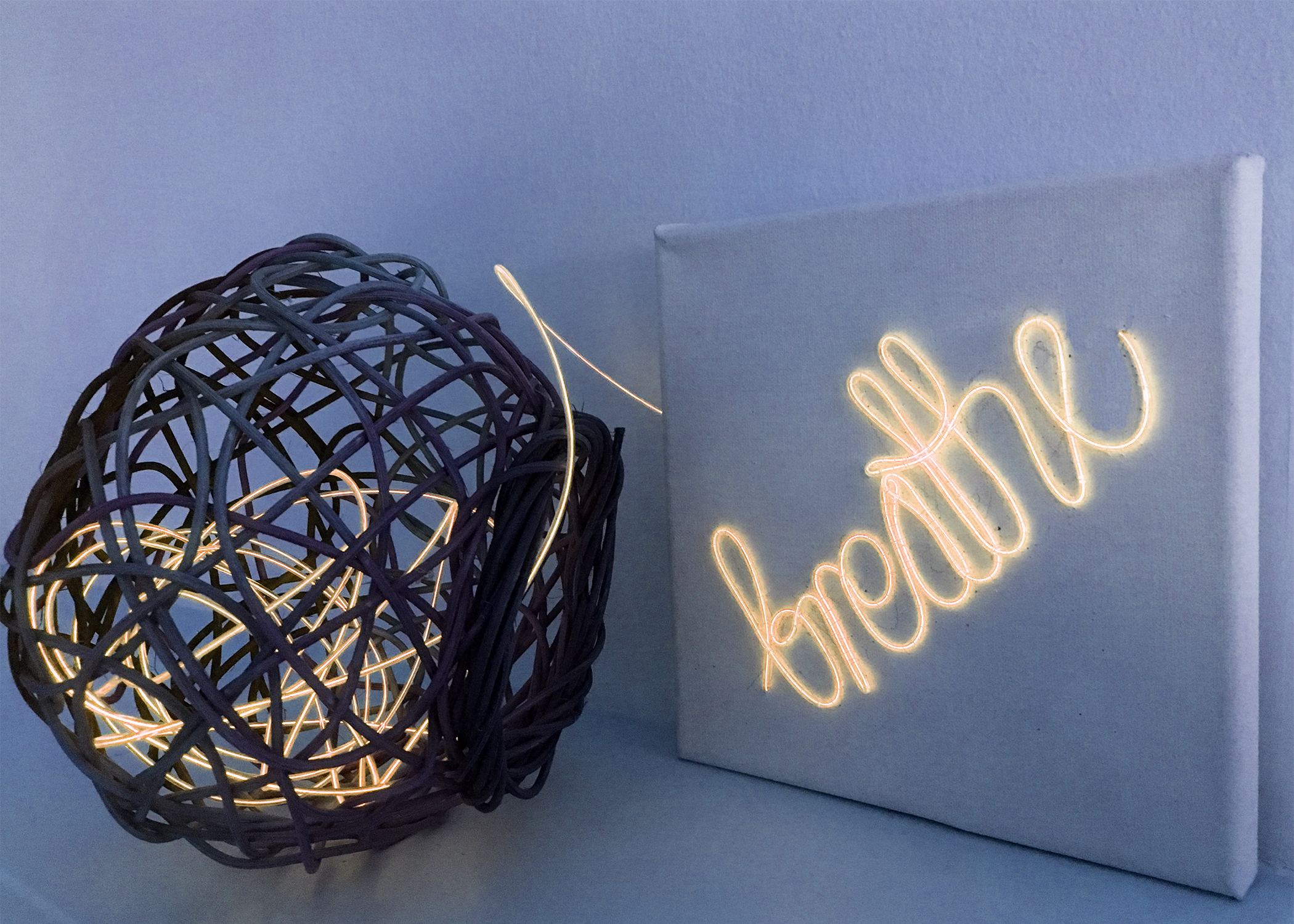Modern Art Oxford’s Creative Associate (Digital) Lucy Sabin is currently leading on an art-research project with Modern Art Oxford called Breathworks. The project invites you to explore conscious and creative approaches to breathing via sound, image and storytelling.
In this blog post Lucy presents her research and reflections on the experience of breathing as a creative act and as a source of creative inspiration.

Recently I’ve been working with Modern Art Oxford on a project called Breathworks, which invites our audiences to produce experimental responses to and recordings of their breath. As Creative Associate (Digital), researching and developing Breathworks has been fascinating. It’s been wonderful to have an excuse to talk about breathing with so many knowledgeable individuals, both within and beyond the gallery.
Since Breathworks was conceived, breath itself has become a hot topic in 2020. Over the past few months, the purpose of Breathworks – to encourage creative connection through experimental approaches to and representations of breathing — gained newfound relevance for humankind. The immortal and tragic words, “I can’t breathe”, echoed during antiracist protests, follows the global outbreak of an airborne virus which has engulfed any sense of normality provoking, in turn, noticeable reductions in air pollution. I mention these diverse phenomena in one sentence (or in one breath?) not to demean or conflate their ongoing, profound and complex reverberations, but to illustrate that breath is a prominent theme of 2020; it is at the forefront of our collective mind.

We are all always already united by our relationship with breath and therefore with air and notions of ‘the atmosphere’ both literal and metaphorical. While this relationship does shape-shift according to significant cultural narratives, notwithstanding the salient events of 2020 so far, there is an inevitable essence to any account of breathing. That is, any consideration of breathing should begin with the fundamental truth that we humans need to breathe in order to survive. Forgive me for stating the obvious here, but sometimes it’s worth reflecting on what we already know, especially if the alternative means taking fundamental truths for granted. Indeed, if we ignore our existential dependence on air, there can be ramifications for environmental, public and mental health as well as social justice. French Philosopher, Luce Irigaray, articulated this concern in detail in her book, L’oubli de l’air chez Martin Heidegger (The Forgetting of Air in Martin Heidegger, 1982).
As a lifeline, then, breathing is creative in the truest sense of the word: it animates life, liberating matter from stillness. This creative force is more powerful than us individuals to the extent that it has been declared divine. The first postnatal breath is the mother of all gasps and if you ever try to hold your breath after that moment, your diaphragm will eventually free itself like a sprung coil, giving rise to a similar, surrendering gasp. Creation stories the world over echo this miraculous breath that delivers us from the womb and into the troposphere. Many stories describe this divine breath or cosmic wind as the animating energy of life itself. Is it not the paragon of a prime mover?
Reverence for breath has filtered into our everyday language. Consider words like ‘animate’, from the Latin for ‘filled with breath’ or ‘inspire’, from ‘breathe into’. By extension, breathing blurs the boundaries between ego-self and the ‘outside’ world that animates and inspires us. Breath, when perceived as an exchange of energy (as per the scientific definition of respiration), is the invisible thread that weaves Indra’s net into existence. Every inhale is an energising expansion and transcendence of our body’s boundaries, a suggestion of something beyond our power. Every exhale is a purifying contraction and transformation of the air nearby, perhaps a sense of ‘spirit’ (read: breath) housed within.

So far I have described the creative potency of breathing whether the experience is conscious or not. Breathing is analogous to dancing in this sense: you don’t have to think about it but you can if you want to. There is an instinctive choreography, reinforced by behaviour patterns, but you can consciously alter the quality of each breath. Breath is also like water in this way. Water will carve and entrench its course down to the sea over many years. It may trickle steadily from the source or gush over jagged rocks and down waterfalls under immense pressure. The destination is certain but the quality of the journey is dynamic, intricate and forever changing.

So mindfulness of breathing can also be regarded as a form of creative expression (it bears mentioning that breathing preceded singing and speaking). By breathing consciously, we are performing an intervention that shapes the flow of life force. This is the essence of prāṇāyāma, which can be interpretatively translated as ‘breath mastery’ but literally means ‘control/expansion of life force’. B.K.S. Iyengar (1918-2014), who is credited with popularising modern postural yoga around the world, referred to the practitioner of prāṇāyāma as an instrumentalist (in Light on Prāṇāyāma, 1981). His analogy is, I believe, an attempt to convey the level of skill and artistry that it is possible to achieve through a sustained practice of mindfulness of breathing.
To recap, we’ve explored how breathing is innately creative first and foremost because it animates life. We also touched upon the idea that conscious breath can become a medium for creative expression akin to dancing or playing music. Via new media and in a contemporary art context, the Breathworks project at Modern Art Oxford will recycle and breathe new life into these age-old notions of breath as a tacit creative force and self-actualising practice in light of where we find ourselves in 2020. We hope you can join us.
Breathworks is presented in August 2020 across Modern Art Oxford’s Instagram and website.
